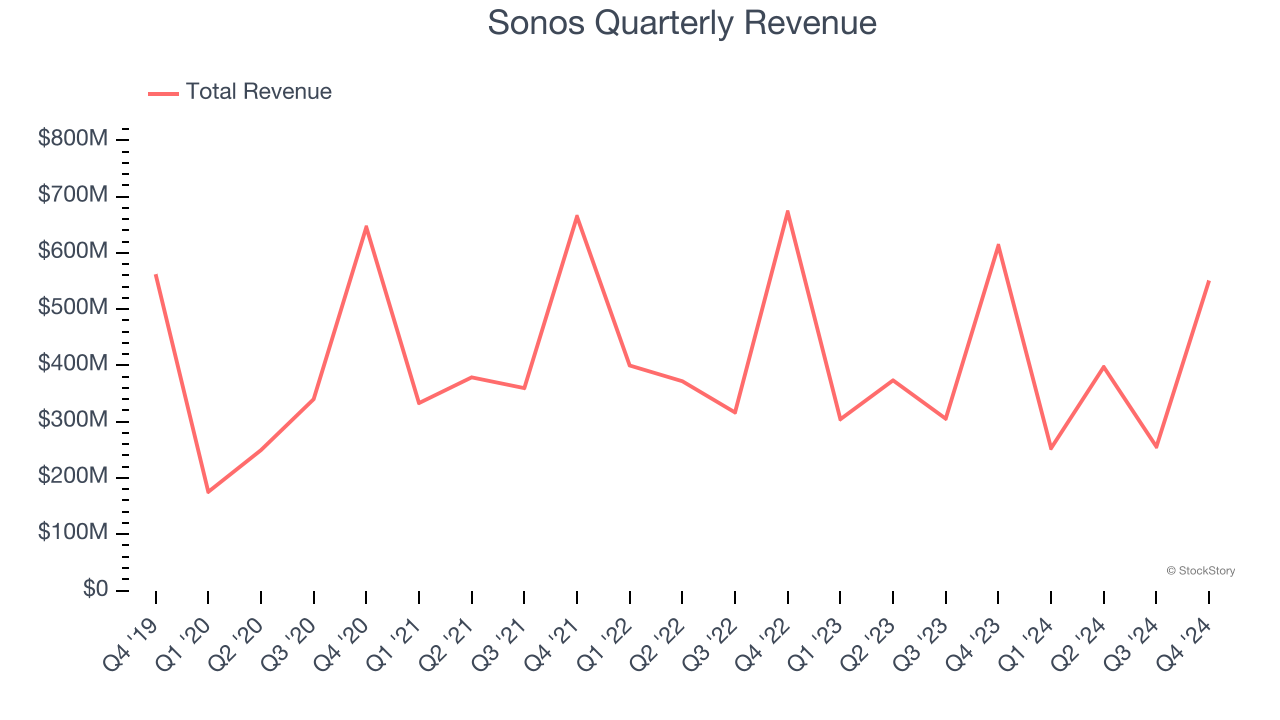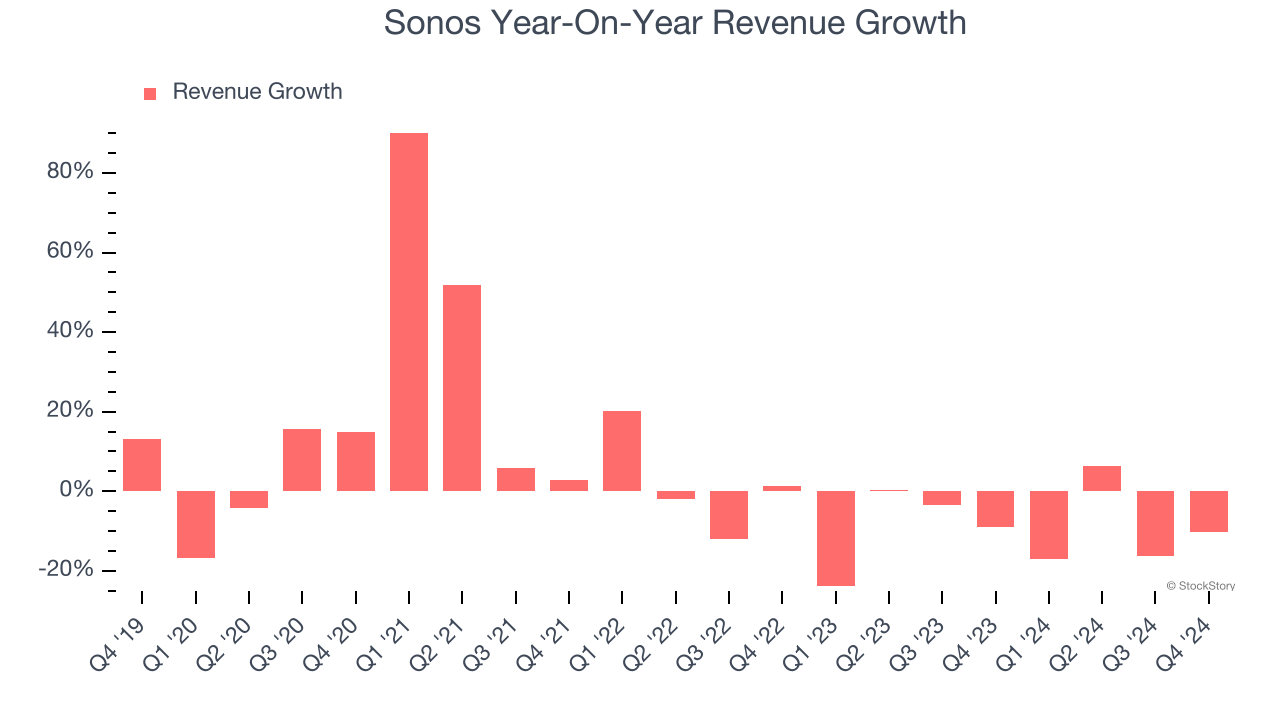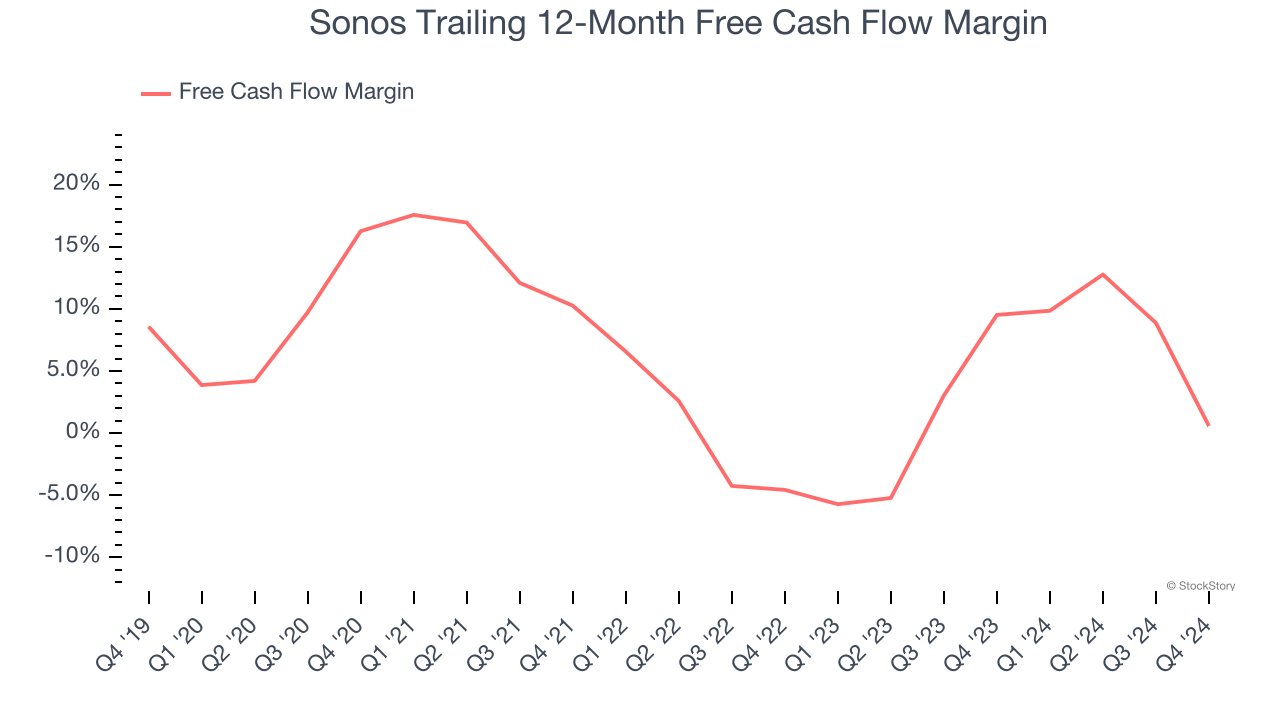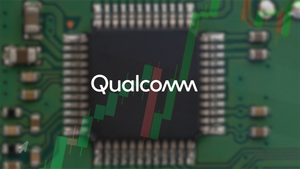
Audio technology Sonos company (NASDAQ: SONO) announced better-than-expected revenue in Q4 CY2024, but sales fell by 10.1% year on year to $550.9 million. Its non-GAAP profit of $0.64 per share was significantly above analysts’ consensus estimates.
Is now the time to buy Sonos? Find out by accessing our full research report, it’s free.
Sonos (SONO) Q4 CY2024 Highlights:
- Revenue: $550.9 million vs analyst estimates of $523.9 million (10.1% year-on-year decline, 5.2% beat)
- Adjusted EPS: $0.64 vs analyst estimates of $0.30 (significant beat)
- Adjusted EBITDA: $91.17 million vs analyst estimates of $55.06 million (16.6% margin, 65.6% beat)
- Operating Margin: 8.7%, down from 13% in the same quarter last year
- Free Cash Flow Margin: 26%, down from 43.9% in the same quarter last year
- Market Capitalization: $1.73 billion
“Yesterday we implemented important organizational changes that mark the start of a new chapter of efficiency and growth for Sonos,” said Tom Conrad, Sonos Interim CEO.
Company Overview
A pioneer in connected home audio systems, Sonos (NASDAQ: SONO) offers a range of premium wireless speakers and sound systems.
Consumer Electronics
Consumer electronics companies aim to address the evolving leisure and entertainment needs of consumers, who are increasingly familiar with technology in everyday life. Whether it’s speakers for the home or specialized cameras to document everything from a surfing session to a wedding reception, these businesses are trying to provide innovative, high-quality products that are both useful and cool to own. Adding to the degree of difficulty for these companies is technological change, where the latest smartphone could disintermediate a whole category of consumer electronics. Companies that successfully serve customers and innovate can enjoy high customer loyalty and pricing power, while those that struggle with these may go the way of the VHS tape.
Sales Growth
A company’s long-term performance is an indicator of its overall quality. While any business can experience short-term success, top-performing ones enjoy sustained growth for years. Over the last five years, Sonos grew its sales at a weak 1.9% compounded annual growth rate. This was below our standards and is a rough starting point for our analysis.

We at StockStory place the most emphasis on long-term growth, but within consumer discretionary, a stretched historical view may miss a company riding a successful new product or trend. Sonos’s history shows it grew in the past but relinquished its gains over the last two years, as its revenue fell by 9.1% annually. 
This quarter, Sonos’s revenue fell by 10.1% year on year to $550.9 million but beat Wall Street’s estimates by 5.2%.
Looking ahead, sell-side analysts expect revenue to grow 8.4% over the next 12 months. Although this projection suggests its newer products and services will catalyze better top-line performance, it is still below the sector average.
Today’s young investors won’t have read the timeless lessons in Gorilla Game: Picking Winners In High Technology because it was written more than 20 years ago when Microsoft and Apple were first establishing their supremacy. But if we apply the same principles, then enterprise software stocks leveraging their own generative AI capabilities may well be the Gorillas of the future. So, in that spirit, we are excited to present our Special Free Report on a profitable, fast-growing enterprise software stock that is already riding the automation wave and looking to catch the generative AI next.
Cash Is King
If you’ve followed StockStory for a while, you know we emphasize free cash flow. Why, you ask? We believe that in the end, cash is king, and you can’t use accounting profits to pay the bills.
Sonos has shown weak cash profitability over the last two years, giving the company limited opportunities to return capital to shareholders. Its free cash flow margin averaged 5.3%, subpar for a consumer discretionary business.

Sonos’s free cash flow clocked in at $143.1 million in Q4, equivalent to a 26% margin. The company’s cash profitability regressed as it was 18 percentage points lower than in the same quarter last year, but it’s still above its two-year average. We wouldn’t read too much into this quarter’s decline because investment needs can be seasonal, causing short-term swings. Long-term trends are more important.
Key Takeaways from Sonos’s Q4 Results
We were impressed by how significantly Sonos blew past analysts’ revenue, EPS, and EBITDA expectations this quarter. We think this quarter featured some important positives, and the stock traded up 3.8% to $14.80 immediately after reporting.
Sonos had an encouraging quarter, but one earnings result doesn’t necessarily make the stock a buy. Let’s see if this is a good investment. What happened in the latest quarter matters, but not as much as longer-term business quality and valuation, when deciding whether to invest in this stock. We cover that in our actionable full research report which you can read here, it’s free.





